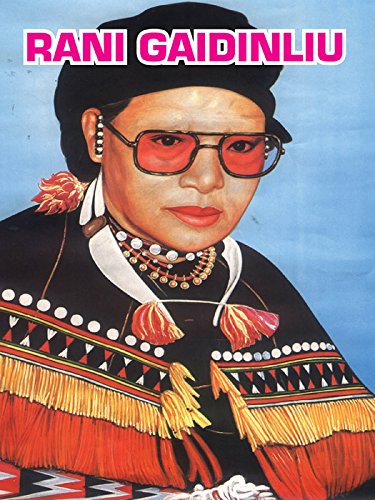
अगर आपने एक बार में ये तस्वीर नहीं पहचानी हो तो आपको सोचना चाहिए कि ऐसा कैसे हुआ होगा? इनके नाम से जाने-माने पत्रकारिता की पढ़ाई के संस्थान आईआईएमसी का हॉस्टल है। फिर भी किसी लेखक-पत्रकार को रानी गाइदिन्ल्यू का जिक्र करते क्यों नहीं सुना?
#RaniGaidinliu
#RaniGaidinliu

करीब सत्रह वर्ष की उम्र में उनके सर पर फिरंगियों ने 500 रुपये का इनाम रखा था। इसके अलावा जिस गाँव से पकड़ी जाती, उनका लगान दस साल तक माफ़ होने की घोषणा भी थी। फिर भी उन्हें पकड़ने के लिए असम राइफल्स की तीसरी और चौथी, दो बटालियनों को उतारना पड़ा था।
#RaniGaidinliu
#RaniGaidinliu

प्रकृति पूजक हेराका (शुद्धिकरण) आन्दोलन से वो तेरह वर्ष की उम्र में जुड़ी थीं और अपने भाई जदोनांग को फांसी पर चढ़ा दिए जाने के बाद रानी गाइदिन्ल्यू ने आन्दोलन का नेतृत्व संभाल लिया। वो कोई रानी भी नहीं थी। उनके गिरफ्तार होने के कई साल बाद, 1932 में नेहरु उनसे मिले थे।
उन्होंने इंटरव्यू में “रानी गाइदिन्ल्यू” बुलाया था। प्रोविंशियल गवर्नमेंट बनने के बाद 1946 में जेल से रिहा तो हुई लेकिन संघर्ष रुके नहीं थे। नागा आन्दोलन बैप्टिस्ट ईसाइयों का ही था और उसे हेराका (शुद्धिकरण) चलाने वाली रानी गाइदिन्ल्यू जैसी पैगन क्यों पसंद आती?
#RaniGaidinliu
#RaniGaidinliu

लिहाजा रानी गाइदिन्ल्यू को 1960 में फिर से भूमिगत होना पड़ा। रानी गाइदिन्ल्यू को 1972 में स्वतंत्रता सेनानी ताम्रपत्र मिल पाया था। दस वर्ष बाद 1982 में उन्हें पद्मभूषण से भी सम्मानित किया गया। असम, नागालैंड और मिजोरम के क्षेत्रों में वो लगातार हेराका आन्दोलन चलाती रहीं। 

उनका देहावसान आज ही के दिन (17 फ़रवरी 1993) हुआ था। जब कांग्रेस के अलावा दूसरे संगठनों के स्वतंत्रता संग्राम में योगदान की बात हो तो कभी रानी गाइदिन्ल्यु का नाम भी जरूर याद दिला दीजियेगा!
#RaniGaidinliu
#RaniGaidinliu
• • •
Missing some Tweet in this thread? You can try to
force a refresh







